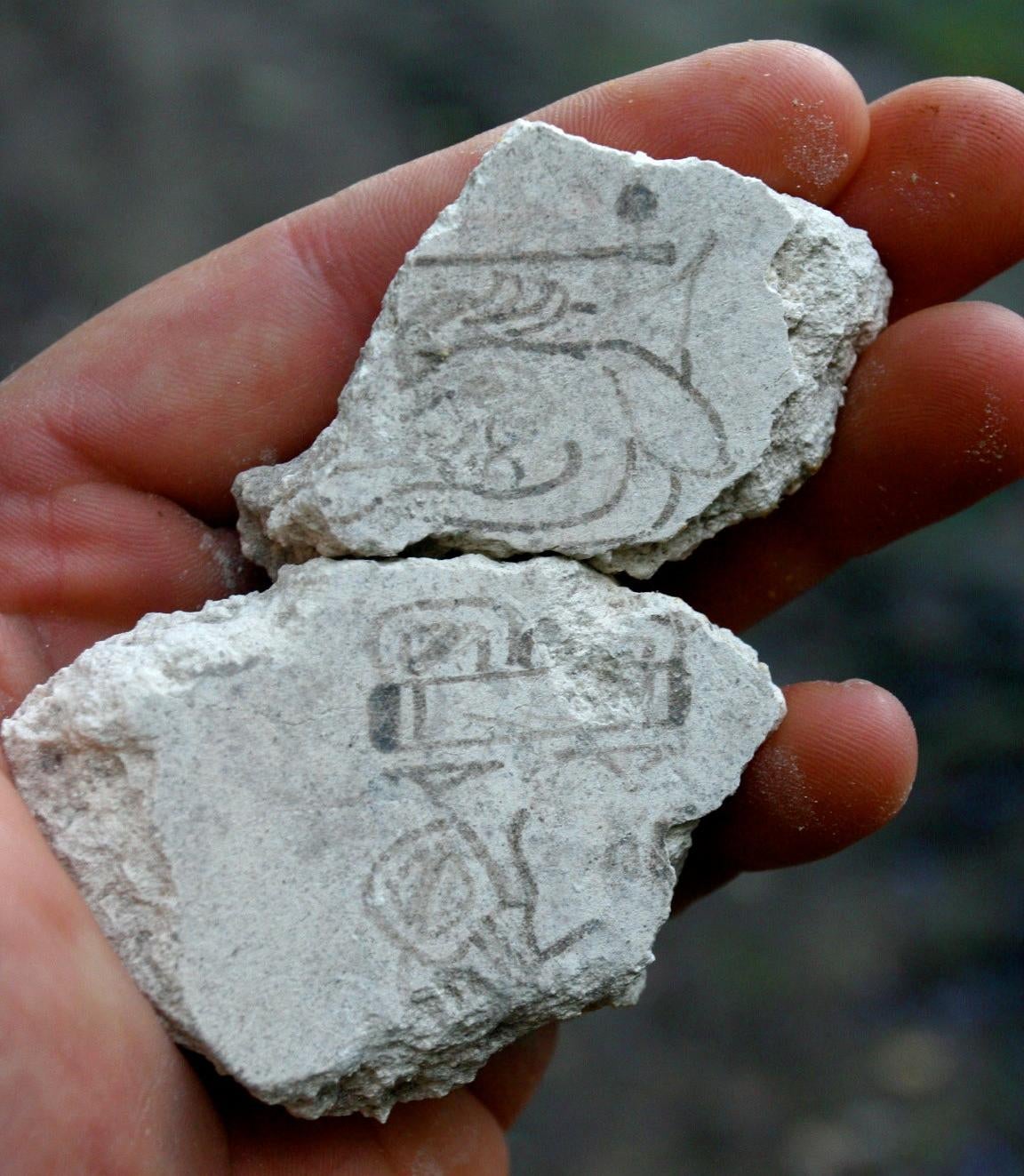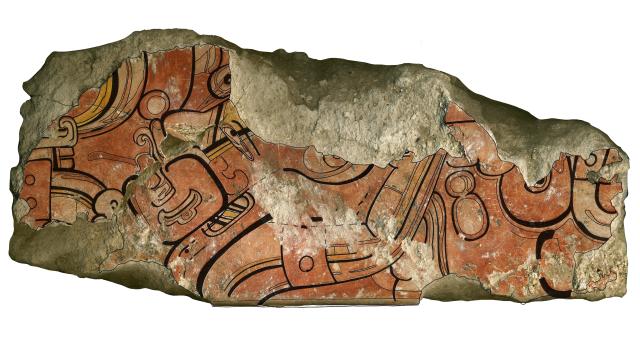Archaeologists say they have found the earliest-yet evidence of a Mesoamerican calendar in fragments of painted murals made in what is now Guatemala over 2,000 years ago.
The murals were found in a building complex called Las Pinturas (“the paintings”), on the Maya site of San Bartolo in Guatemala. The murals depict various humans and gods in a pyramidal temple. They date to between 300 and 200 BCE, and record a date, 7 Deer, that is part of the 260-day Tzolk’in divinatory calendar. The team’s research is published today in Science Advances.
“It was generally believed that the calendar system of 260 days originated elsewhere, maybe in Oaxaca,” said David Stuart, an archaeologist at the University of Texas, Austin and lead author of the research, in an email to Gizmodo. “This new find makes Maya evidence just as old, and indicates that the origin-place of the Calendar is an open question. It could even have been a Maya development for all we know.”
The Tzolk’in calendar pairs 13 numbers with 20 named days in a 260-day cycle, meaning that there are no weeks and months in the system. Some Maya groups still observe the calendar. The 7 Deer date the team found includes the Mayan numeral for seven with the head of a deer painted below.
Much of what we know about the Maya’s astrological and calendrical systems come from a series of codices that survived destruction at the hand of Spanish priests in the 16th century. But several surviving artifacts indicate the Mesoamerican civilisation’s calendar system dates to well before the codices were scribed. In 2011, a team of archaeologists (a team Stuart was a part of) found a Maya room in the Xultún complex in Guatemala that contained calendrical hieroglyphs. But the newly found calendar record is over 1,000 years older.

“Early evidence of Mesoamerican calendar has been debated, but they present clear evidence of the 260-day calendar,” said Takeshi Inomata, an archaeologist at the University of Arizona who is unaffiliated with the new work, in an email to Gizmodo. “Their work at the site of San Bartolo has been transforming our understanding of Maya writing and art.”
The researchers note that one apparent Maya hieroglyph found in Mexico’s Tabasco region dates to 650 BCE, but they don’t believe that hieroglyph represents a day. The newly announced Guatemalan calendar glyph is also rare in that it was painted; earlier possible evidence of the calendar is carved in stone monuments.
Gerardo Aldana, an archaeologist at UC Santa Barbara who was unaffiliated with the research, said that the work was rare and important but “raises as many questions as it answers.” Aldana noted that cultural exchange between what’s now considered Maya and Isthmian regions of Mesoamerica indicates that “writing and calendric traditions and calendric traditions were developed at the regional level,” rather than in a single place.
“One thing is absolutely clear: San Bartolo and the immediate region is crying out for further research, as it may be able to provide a unique window into the long-term development of regional writing traditions as well as astronomical practices,” Aldana said.
Hopefully, more discoveries will yield more calendrical insights, as archaeologists continue to break down the origins of this complex timekeeping system.
More: Lost Monument of Early Maya Civilisation Discovered in Mexico
